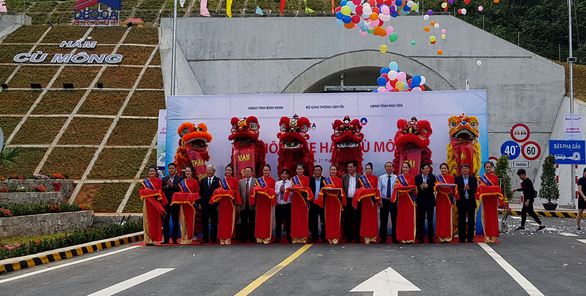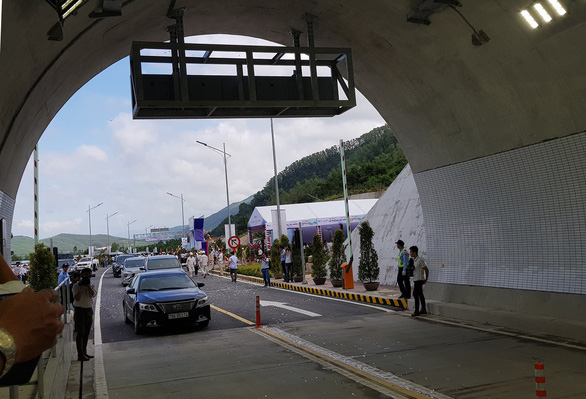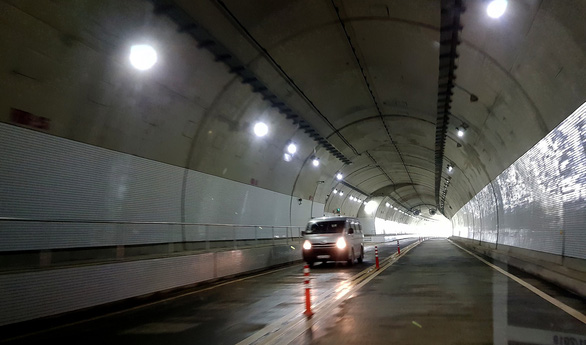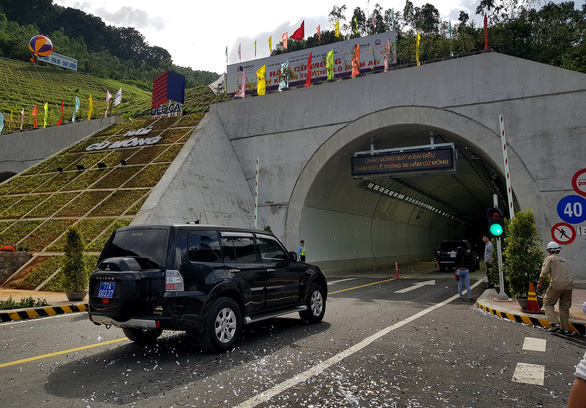The first side of a pair of tunnels running through a mountain pass connecting two provinces in south-central Vietnam was opened to traffic on Monday morning, providing a much safer way to travel between the destinations linked by one of the country’s most dangerous mountainside switchbacks.
The Cu Mong Tunnel System, costing nearly VND4 trillion (US$172 million) to develop, consists of two 2.6-kilometer tunnels running parallel under the Cu Mong Mountain Pass, which separates Binh Dinh and Phu Yen Provinces.
It lies on National Route 1, a 2,360-kilometer artery that stretches from Vietnam’s northern border area to its southernmost tip.
 |
| Officials and the developer’s representatives are seen at a ribbon-cutting ceremony for one side of the Cu Mong Tunnels in south-central Vietnam, January 21, 2019. Photo: Duy Thanh / Tuoi Tre |
 |
| Cars enters the Cu Mong Tunnels in south-central Vietnam, January 21, 2019. Photo: Duy Thanh / Tuoi Tre |
In the immediate term, only one of the two tunnels of the system, a two-lane road with the maximum speed of 80 kilometers per hour for both carriageways, is open to traffic.
It now takes only six minutes to make a journey through the ten-meter-wide tunnel, compared to half an hour for a ride on the Cu Mong Pass, notorious for its road crashes.
With construction kicking off in September 2015, the tunnel pair was completed two months and a half ahead of the deadline, said Ho Minh Hoang, director of Deo Ca Investment Joint Stock Company, the project’s developer.
 |
| A vehicle runs through Cu Mong Tunnels in south-central Vietnam, January 21, 2019. Photo: Duy Thanh / Tuoi Tre |
Deputy Minister of Transport Le Dinh Tho said at the inauguration ceremony that the tunnels were built solely by the domestic developer and contractors.
“This evidences Vietnam’s mastery of tunnel construction technology,” Tho underlined.
“The country is now completely able to carry out large projects that involve modern technology.”
The Cu Mong tunnel pair is Vietnam’s third-longest underground road passageway, following the 6.3-kilometer Hai Van Tunnel in the central region and the 4.1-kilometer Deo Ca Tunnel in the south-central part of the country.
Like us on Facebook or follow us on Twitter to get the latest news about Vietnam!






















































